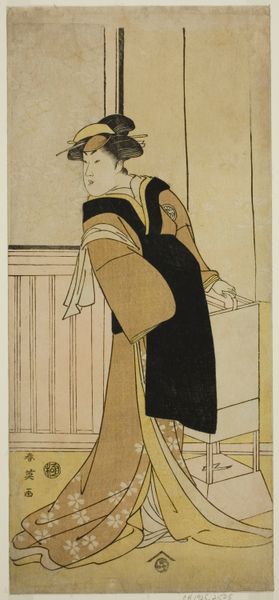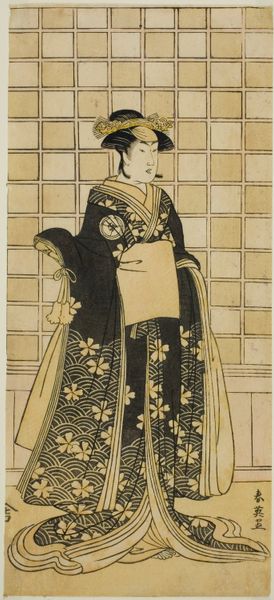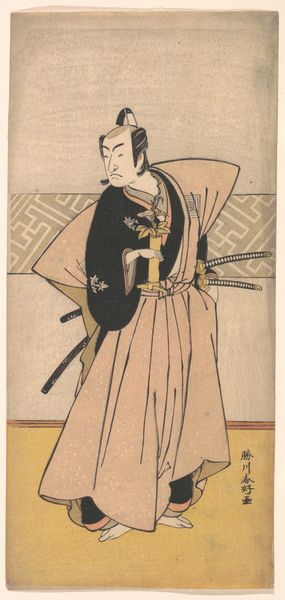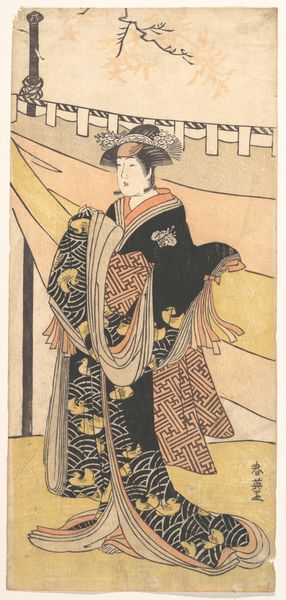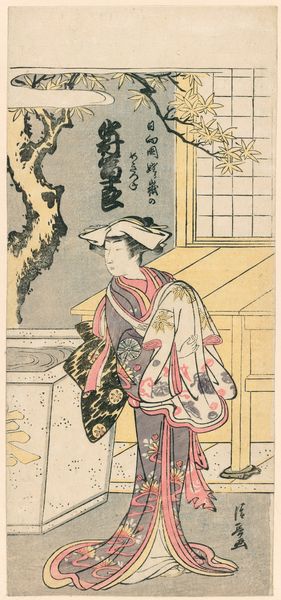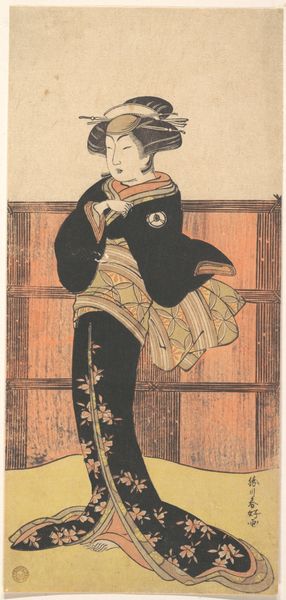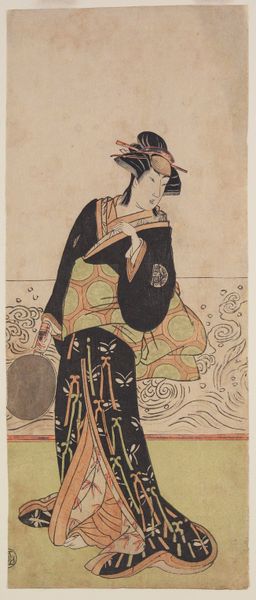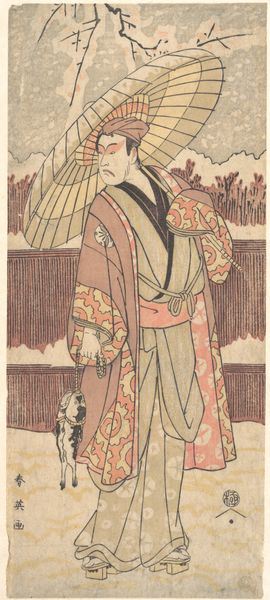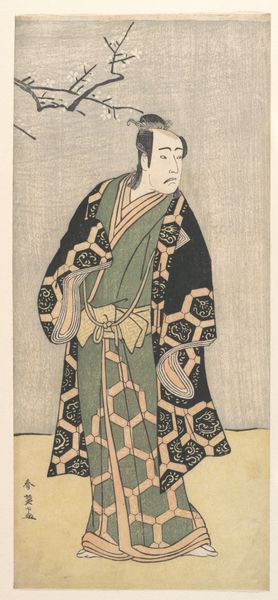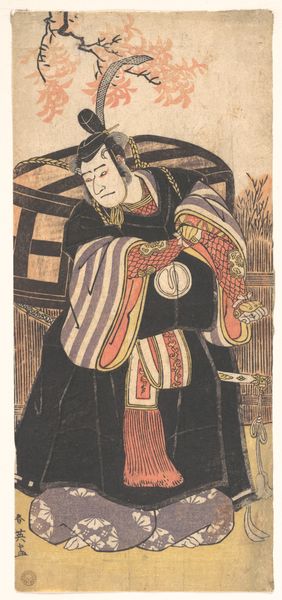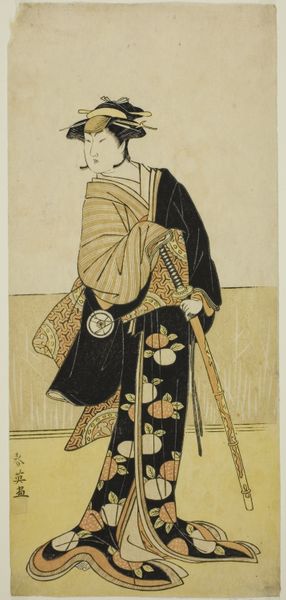
Nakayama Tomisaburo in the role of An no Oyasu 1792
0:00
0:00
print, woodblock-print
#
portrait
# print
#
asian-art
#
caricature
#
ukiyo-e
#
japan
#
woodblock-print
#
men
#
sword
Dimensions: 12 11/32 x 5 5/8 in. (31.4 x 14.3 cm)
Copyright: Public Domain
Katsukawa Shun'ei produced this woodblock print depicting Nakayama Tomisaburo as An no Oyasu. Prints such as these were produced and consumed in the floating world of the Edo period. This print, made sometime between 1790 and 1810, gives insight into the theatrical culture of Japan. Notice the actor's costume, their hairstyle, and the play's setting. These visual codes indicate the subject's status, gender, and social context. The plum blossoms blooming overhead further create an atmospheric setting. Kabuki theatre was extremely popular in urban centers like Edo, now Tokyo, and Osaka. The Tokugawa shogunate, which ruled Japan during this period, had strict regulations about the kind of plays that could be performed and who could attend. Nevertheless, Kabuki flourished and prints such as these were important ephemera that allowed audiences to remember and celebrate their favorite actors and performances. Art historians consult playbills, diaries, and other archival sources to understand the role of theatre in Japanese society. It is important to recognize that art always exists within a specific social and institutional context.
Comments
No comments
Be the first to comment and join the conversation on the ultimate creative platform.
